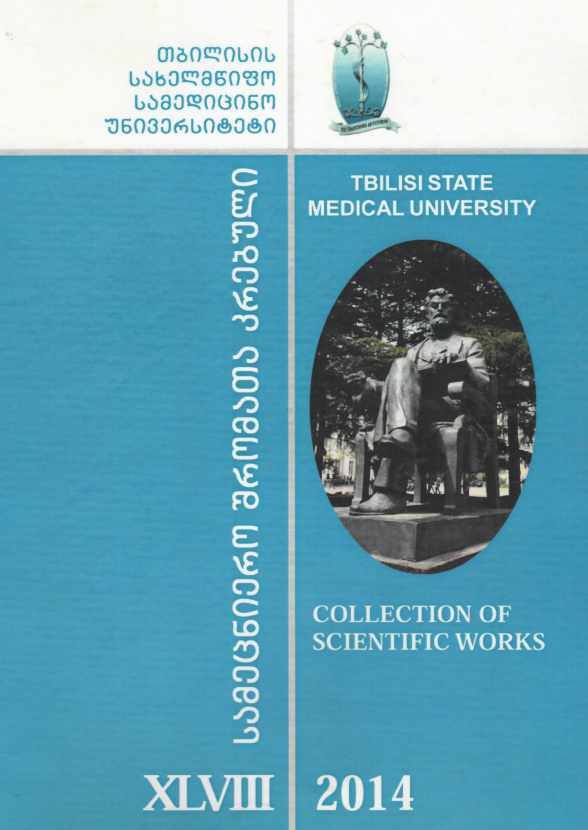Abstract
Acute diarrhea is one of the most common cause of morbidity and mortality in children and adults. Furthermore, the prevalence of hemorrhagic colitis increased 2-3 times in 2011-2013 years in Georgia. Etiological structure of infectious diarrheas consists of various pathogens. By the adoption of new modern diagnostic methods identification of non-0157 E.coli strains has significantly increased in Georgia.
The aim of the research was: identification and evaluation of etiological structure of acute non-bloody diarrheas and hemorrhagic colitis at the modern stage in Georgia. The diagnosis was established by bacteriological method-culture isolation, identification of molecular markers of shiga- toxin (Stx1, Stx2. eae, ehy) in feces by PCR and ImmunoCard STAT methods.
Thus, the etiological structure of hemorrhagic colitis was identified in 40,14 % (where the leading place had STEC strains) and etiology of non-bloody diarrhea in 16,79% of cases (where the rate of Salmonellosis was highest). These above mentioned investigations increased the diagnosis of STEC infection at the early stage of the disease.
References
Bennet W.J. Tarr P. Enteric Infections and Diagnostic testing. 2009; 25: 1-7.
Center For Disease Control and Prevention. Recommendations for Diagnosis of Shiga toxsin Producing Escherichia coli Infections by Clinical Laboratories. MMWR. vol.58. No. RR-12. 2009.12
De Boer E, Heuvelink AE. Methods for the detection and isolation of Shiga- toxin producing Escherichia coli. Symp. Ser Soc Appl Microbiol 2000:133S-43
Donnenberg M.S. Escherichia coli, Second Edition: Pathotypes and Principles of Pathogenesis. 2013.;2; 25-30.
Tarr PI; Gordon CA; Chandler WA. Shiga-toxin producing Escherichia coli and hemolytic –uremic syndrome. Lancet 2005. 365.1073-1085.
World Health Organization. available at http://www.who.int/mediacentre/factsheets/fs330/en/index.html




